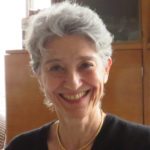Link to Pubmed [PMID] – 15681826
Am. J. Pathol. 2005 Feb;166(2):421-32
Cryptococcus neoformans is a yeast responsible for disseminated meningoencephalitis in patients with cellular immune defects. The major virulence factor is the polysaccharide capsule. We took advantage of a relevant murine model of disseminated meningoencephalitis to study the early events associated with blood-brain barrier (BBB) crossing. Mice were sacrificed at 1, 6, 24, and 48 hours post-intravenous inoculation, and classical histology, electron microscopy, and double immunofluorescence were used to study tissues and yeasts. Crossing of the BBB occurred early after inoculation, did not involve the choroid plexus but instead occurred at the level of the cortical capillaries, and caused early and severe damage to the structure of the microvessels. Seeding of the leptomeninges was not the primary event but occurred secondary to leakage of cortical pseudocysts. Organ invasion was associated with changes in cryptococcal capsule structure and cell size, which differed in terms of magnitude and kinetics, depending on both the organs involved, and potentially, on the bed structure of the local capillary. The rapid changes in capsule structure could contribute to inability of the host immune response to control cryptococcal infection in extrapulmonary spaces.





